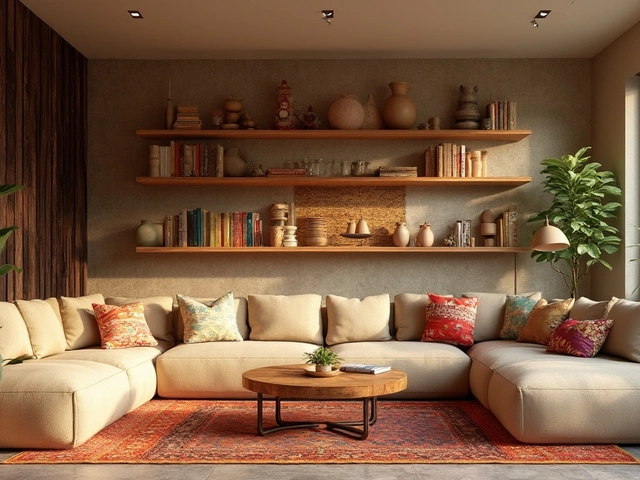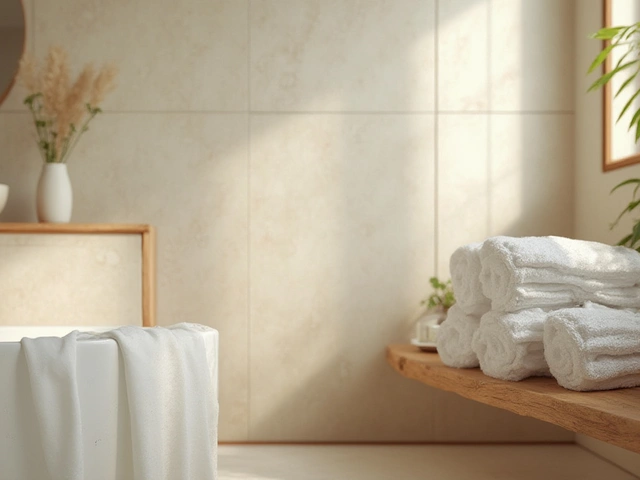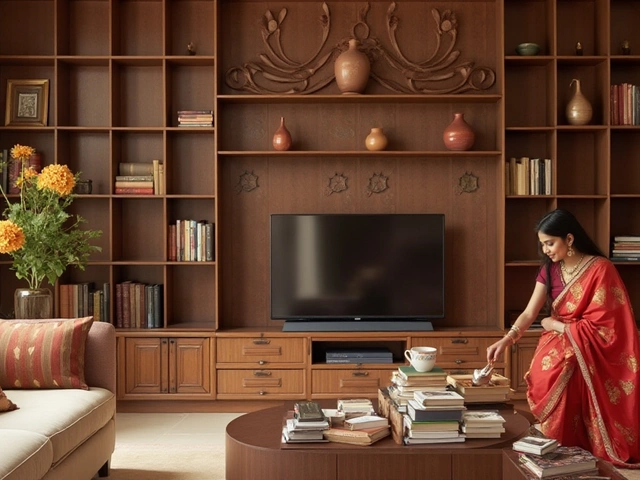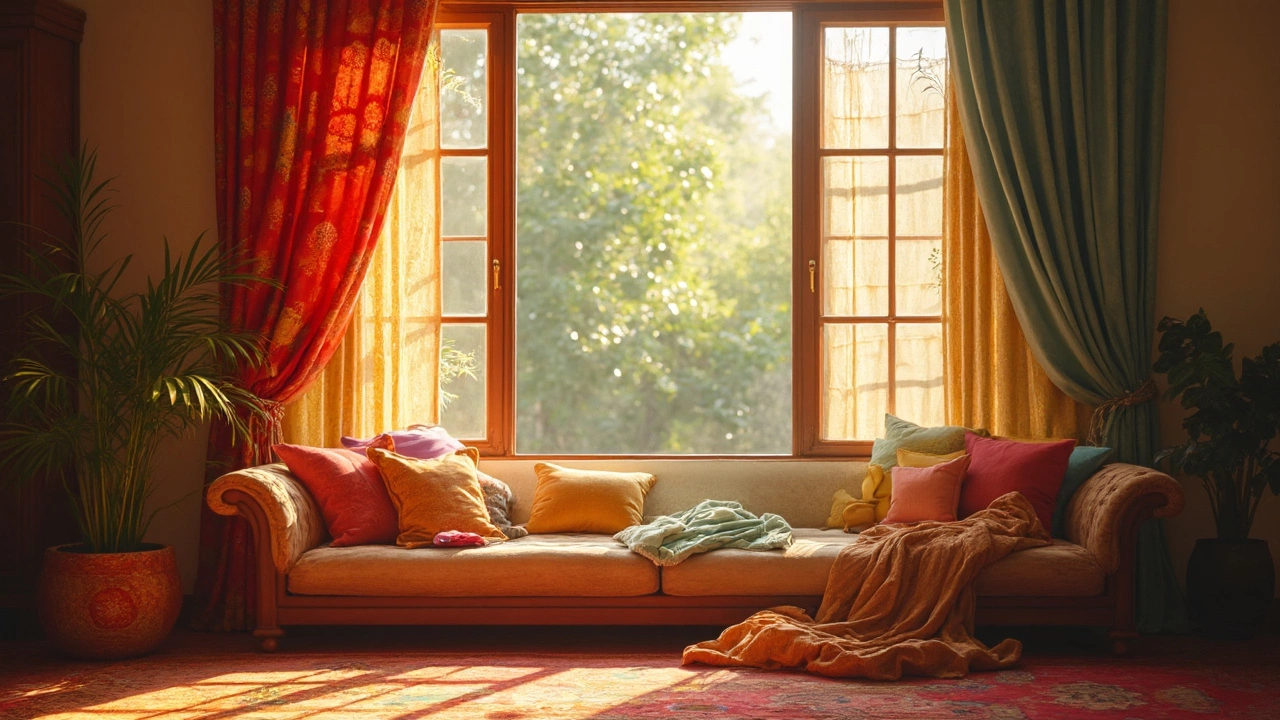
Ever stood in a store aisle staring at rows of window coverings, not really sure what you’re looking at? You’re definitely not alone. Most folks use the words "curtains" and "drapes" like they’re the same thing, but they’re not. Knowing the real difference can save you time, money, and that headache when your living room just doesn’t look quite right.
The main difference isn’t even about the pattern or how fancy they look—it’s about what they do and what they’re made of. Drapes are heavier, lined, and usually hang all the way to the floor. Curtains? They’re lighter, sometimes sheer, and much more flexible for casual spaces. That tiny detail can totally change how a room feels—and whether your nosy neighbor can peep in after sunset.
If you’re redoing a bedroom or tricking out your home office, picking the right window treatment guarantees the right amount of light, privacy, and style. Plus, you don’t want to drop money on the wrong thing and end up cursing at tangled fabric every morning. Let’s clear up the confusion right away, and help you figure out what really works for your space.
- What's the Basic Difference?
- Fabric and Functionality
- Light Control and Privacy
- Design Styles: Formal or Casual?
- Practical Tips for Choosing
- Common Myths and Mistakes
What's the Basic Difference?
If you walk into any home store and ask for window coverings, you’ll probably hear "drapes" and "curtains" used back and forth. Let’s get real—these two aren't the same thing, and knowing the difference will help you buy what actually fits your space.
The most important thing to know is that drapes are made to be heavy-duty. They’re usually lined, sometimes with blackout material, and they run all the way down to the floor. This gives them a solid, finished look, which is perfect for rooms where you want a little more drama, like your formal dining or bedroom. Curtains, on the other hand, come in lighter fabrics and are more casual. They might just hit the window sill or extend a bit below, and many aren’t lined at all.
Here’s a quick breakdown to clear things up:
- Drapes: Thick, often lined, always reach the floor. Designed for privacy and blocking light. Usually sold in pairs.
- Curtains: Lighter fabric, can be unlined or sheer, hang to the window sill or just below. Great for letting in light and adding color.
For a side-by-side view, check out this table:
| Drapes | Curtains | |
|---|---|---|
| Typical Material | Heavy, lined (velvet, damask, blackout) | Lightweight, unlined (cotton, linen, sheer) |
| Length | Floor-length | Window sill or slightly longer |
| Main Use | Privacy, block light, formality | Soften look, let in light, casual spaces |
| Rooms | Bedrooms, formal living, dining rooms | Kitchens, casual living rooms, kids' rooms |
If you want your space to feel polished or you need to block streetlight at night, go for drapes. Want to keep things easy, airy, and a little more homey? Curtains are the way to go. It’s just that simple.
Fabric and Functionality
The first thing to look at is what these things are actually made from. Drapes are almost always crafted from thick, heavy materials like velvet, brocade, or blackout fabric. They usually have a lining sewn in, which helps them block out light and keep your room insulated—even in winter. That’s why people turn to drapes for bedrooms or living rooms where you want real privacy and less noise from outside.
Curtains, on the other hand, are usually made from lighter fabrics like cotton, linen, or polyester. Sometimes you’ll see sheer curtains, which let tons of light in but don’t do much for privacy after dark. These are perfect for kitchens or any spot where you want the sun without the fishbowl effect.
Here’s a quick rundown:
- Drapes: Heavy, lined, floor-length, serious about blocking light.
- Curtains: Lighter, more casual, come in lots of lengths and can be unlined or lined.
Not only does the fabric affect how much sun or heat comes through, it also changes the overall vibe of a room. Drapes look stately and cleaned-up—think big city hotels. Curtains are easier to wash and swap out when you want a new look. That’s a lifesaver if you have kids or pets that go wild around the windows.
One practical tip: if you need your room pitch dark (think baby nurseries or anyone on night shifts), blackout drapes make a world of difference. If you just want something easy to open and close, go for curtains—they’re lighter, usually cheaper, and way simpler to throw in the wash.
Light Control and Privacy
When it comes to blocking light and keeping your space private, there’s a clear gap between drapes and curtains. Drapes win hands down for controlling sunlight and blocking out streetlights. They're almost always made with thicker material, and most are fully lined. This not only blocks unwanted light but also helps out big time if your bedroom faces a busy street or you’re working night shifts. The heavier the fabric, the more it blocks—some blackout drapes can stop up to 99% of outside light.
Curtains lean toward letting light in. Sheer curtains are the MVP if you like waking up to natural sunlight or just want to cut the glare while still seeing outside. They're not so great if privacy is a must, though. With thin fabrics and lighter builds, curtains are better for rooms where you’re not worried about people seeing in, like kitchens or sunrooms.
Here’s a quick side-by-side to make things clearer:
| Feature | Drapes | Curtains |
|---|---|---|
| Light Blocking | High (up to 99%) | Low to Moderate |
| Privacy | Excellent | Fair to Good |
| Best For | Bedrooms, TV rooms | Living rooms, kitchens |
If you want both sunlight during the day and privacy at night, try layering. Hang sheer curtains for daytime brightness, then add drapes you can pull shut after dark. This trick also helps with noise. Thicker materials like those used in drapes can cut outside sounds by 20–30%—a huge plus if you have loud neighbors or live close to traffic.
When you’re shopping, check the product labels for terms like 'blackout' or 'room darkening' if blocking light is your top concern. For sheer or lighter options, look for keywords like 'voile' or 'semi-sheer.' This simple detail saves you from playing the guessing game later when you’re trying to catch some sleep on a bright summer morning.
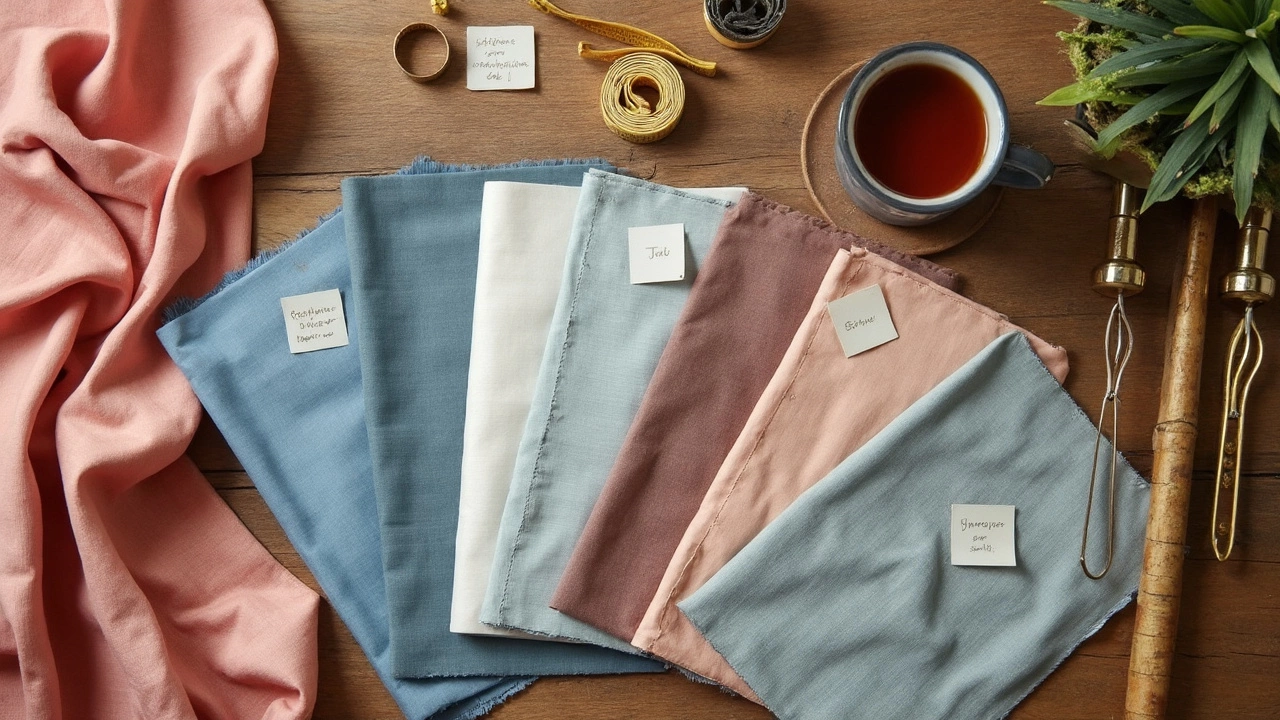
Design Styles: Formal or Casual?
If you’re wondering whether to go full-out elegant or keep it chill, it all boils down to your choice between drapes and curtains. Drapes are basically the go-to if you want to pull off that classic, formal look you see in old-school mansions or upscale hotels. They hang heavy, often in deep colors or rich patterns, and the material is usually lined velvet, damask, or brocade. The effect? Instant drama and sophistication, especially when paired with matching tiebacks and layered valances.
Curtains are way more laid-back. These come in lighter fabrics like cotton, linen, or polyester, and you’ll see them in breezy prints, everyday stripes, or simple solids. If your style is more ‘kick your shoes off and relax,’ curtains are the easy win. They’re the heroes of casual living rooms, kitchen nooks, or kids' rooms, basically anywhere you want the vibe to stay low-key.
Real-life example: My friend’s dining room looked stuck in the ‘90s until she swapped her thin curtains for floor-length navy drapes. One weekend, the mood flipped—now it looks like the spot for Sunday dinners, not just Tuesday pizza night. Small changes totally transform a room’s vibe.
Here’s a fast comparison of what you’ll find with each:
| Feature | Drapes | Curtains |
|---|---|---|
| Typical Fabric | Velvet, damask, brocade | Cotton, linen, polyester |
| Style Vibe | Formal, traditional, dramatic | Casual, light, relaxed |
| Room Type | Dining rooms, formal living areas | Bedrooms, kitchens, everyday spaces |
| Length | Always to the floor | Short or floor-length |
| Lining | Almost always lined | Rarely lined |
Most designers say if your space has crown molding, high ceilings, or you want to play up the architecture, drapes fit right in. But if your house is more open-plan and you like to swap styles each season, stick with curtains—you’ll change up the look without major hassle or cost.
Practical Tips for Choosing
Shopping for drapes and curtains isn’t just about grabbing something that looks nice. Each choice changes how your room feels and works. Here are some real tips to help you get it right the first time—without needing a design degree.
- Think about your sunlight problem. If you like sleeping in total darkness, drapes with blackout lining are your gold standard. Sheer curtains, on the other hand, keep it light and breezy but won’t stop direct sun or curious eyes.
- Measure your windows twice. Fabric should be at least twice as wide as the window for that full, gathered look. Anything less can look weirdly flat and cheap.
- Match the function to the room. Bedrooms and living rooms usually get drapes—more privacy and insulation. Kitchens and bathrooms? Curtains are easier to clean and swap out if things get messy.
- Don’t guess on hanging height. Hang drapes about 4-6 inches above the window frame for a taller-looking room. Curtains can play closer to the window, but still aim high for style.
- Consider the hardware. Heavy drapes need sturdy rods and brackets. Curtains can hang on tension rods or simple hooks, especially on small windows.
Here’s a quick look at how drapes and curtains stack up for key uses:
| Feature | Drapes | Curtains |
|---|---|---|
| Light Blocking | Excellent | Limited |
| Privacy | High | Low to moderate |
| Insulation | Good | Poor |
| Formality | Formal | Casual |
| Cleaning | Dry clean | Machine wash |
If you want the best of both worlds, go with a double rod—curtains closest to the window, drapes on top. That way, you can switch between sheer sunlight and total privacy. And if you live on a street with a lot of noise or drafty old windows, lined drapes really do help keep the heat in (or out) and the noise down.
Last tip: sample your fabric at home before you commit. Lighting changes everything and what looks beige in the store can look pink by your sofa. Trust your eyes more than your phone’s camera.
Common Myths and Mistakes
Probably the biggest myth out there is that drapes and curtains are just two fancy words for the same thing. Not true. Walk into ten different homes, and you’ll spot curtains in casual kitchens and bathrooms, but you’ll rarely see lined, floor-length drapes hanging over a laundry room window. Most of us slip up because home stores often lump them together, making it easy to buy the wrong thing for the job.
People also believe drapes are always more expensive. The price depends on fabric, brand, and length—sometimes high-end curtains can actually cost more than basic drapes. Another mistake is hanging both wrong. Drapes need to graze or just touch the floor to look right. Curtains can be café style (covering just half the window), but folks often buy panels too short or too long, throwing off the room’s proportions.
- Assuming darkness: Many think all drapes blackout a room. Unless labeled “blackout,” regular drapes just dim the light a bit. Read the label or you’ll still be squinting on Saturday morning.
- Overlooking cleaning: A lot of drapes are dry-clean only. Tossing them in the washer, hoping for the best, usually ends up a disaster. Double-check the tag before you clean anything.
- Ignoring hardware: Curtain rods aren’t one-size-fits-all. Heavy drapes sag on wimpy rods—pick sturdy rods, or risk a droopy mess.
- Mixing up styles: People will hang fancy velvet drapes in a playful kids’ room and wonder why it looks off. Match the mood—drapes do formal, curtains can do relaxed.
Check out this table breaking down some key trouble spots:
| Common Mistake | Why It's an Issue |
|---|---|
| Wrong length | Makes windows look awkward, room feels off |
| Cheap rods with heavy drapes | Rod bends or falls, could ruin wall |
| Skipping a liner | No privacy or insulation for rooms that need it |
| Mixing patterns/styles blindly | Clashes with furniture or decor, ruins vibe |
You’ll avoid most pain if you shop with a tape measure and pay attention to details. Ask questions, check labels, and remember: just because something is pretty doesn’t mean it’s right for your space.
